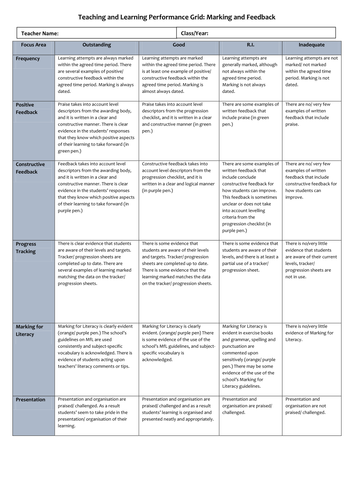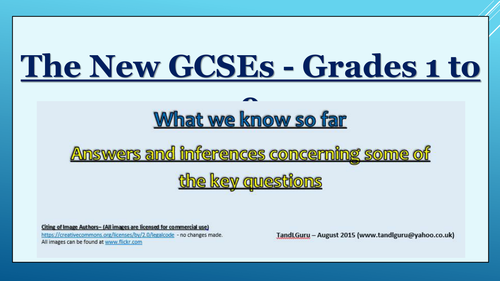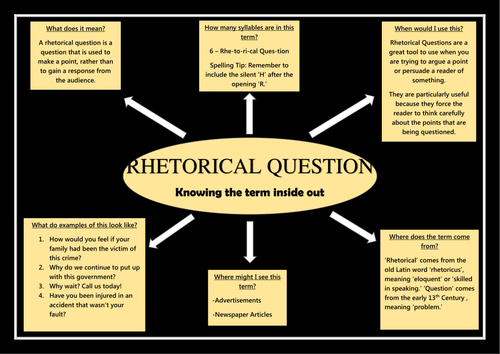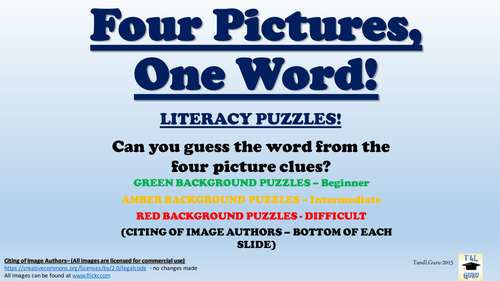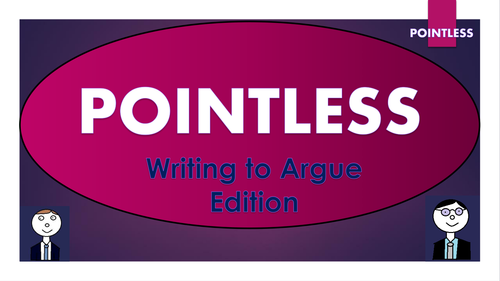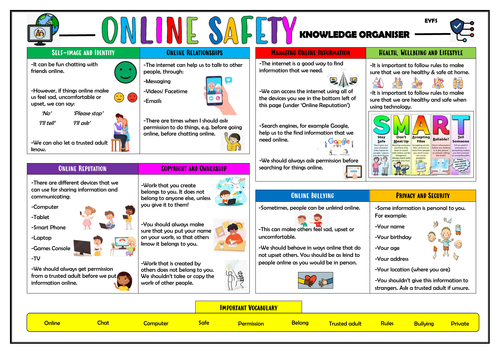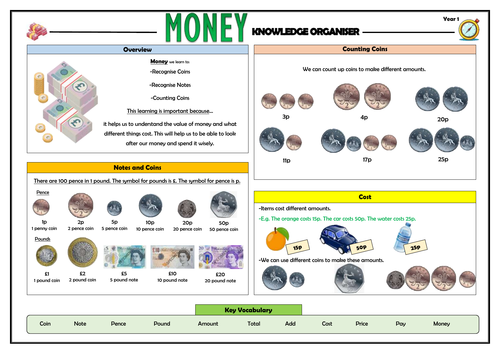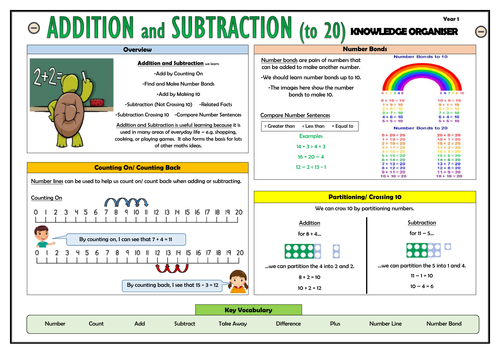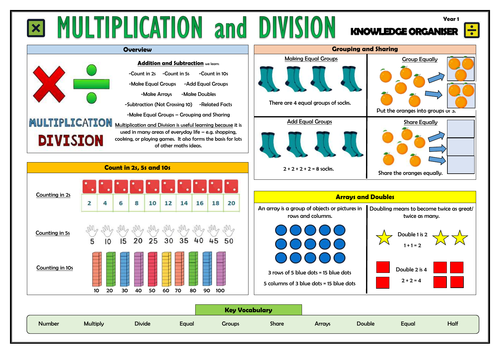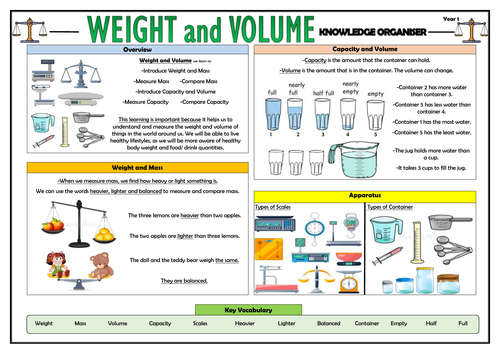
3k+Uploads
1967k+Views
2278k+Downloads
Whole school

Descriptive Writing - Full Assessment including Insert and Mark Scheme
I have recently taught a descriptive writing unit, and devised this assessment to gauge how students descriptive skills have progressed over the term. It includes the question paper, the mark scheme, and the reading insert.
Formal enough to ensure that the students took the assessment seriously, but engaging enough to ensure that all students wanted to complete all of the tasks, (they hate some of the practice exam questions that exam boards provide on the past papers) all of my students seemed to enjoy completing this more than they normally enjoy assessments!
The assessment is designed to gauge students' skill in:
- Defining and giving examples of descriptive devices;
- Identifying descriptive devices in texts;
- Analysing the effect of descriptive writing in a vivid description of a 'Nightmare World.'
- Creating their own descriptive piece about a their own nightmare world.
This lesson can either be bought individually, or as part of the Descriptive Writing Big Bundle (which works out cheaper.)

Marking and Feedback Performance Grid
For use alongside book monitoring/ work scrutiny, this succinct performance grid enables observers to gauge and categorise marking and feedback using OFSTED guidance for effective feedback. The first page of the document provides descriptors of 'outstanding', 'good', 'requires improvement' and 'inadequate' feedback within appropriately considered focus areas, for example: Frequency, Constructive Feedback, Marking for Literacy, etc. Schools that already employ this tool often opt to highlight the descriptors on this page as they complete the scrutiny, thus creating a bigger picture of the strengths and areas for improvement in the feedback observed. This can also be a helpful aid in arriving at an overall judgement, should your school opt to arrive at one. The second page allows observers to further pinpoint and describe the 'www' (what went well) and 'ebi' (even better if) aspects of the feedback, to aid teacher in improving their practice.

New GCSEs Grades 1-9 - Answers to the Key Questions.
I have used this resource to explain the new GCSE changes to other staff, governors, and parents. Feedback has been that it is clear, concise, and answers some of the key questions. In the document, I have addressed:
- What changes have already taken place?
- When do the changes take place?
- How do the new grades equate to the old grades?
- Why are the changes necessary?
- What are the changes to the English GCSE?
- What are the changes to the Maths GCSE?
- How will school performance now be judged?
Also attached is a visual representation of how the new GCSE grades map onto the old GCSE grades. Within the PowerPoint are a number of links to key information provided by the DfE and OFQUAL. Hope this helps!

Descriptive Devices - Knowing the Words Inside Out! (Helpsheets, Posters and Worksheet Templates)
These colourful, engaging and informative posters/ help-sheets are perfect to help your students gain a broad and deep understanding of each of the key descriptive devices, thus vastly improving their textual analysis and enhancing their creative writing attempts.
Each sheet displays the key word in the middle, and then answers some of the key questions surrounding the words, including:
- What does it mean?
- How many syllables does it have?
- What are examples of it?
- How do I spell it?
- When would I use this?
- What type of word is it?
- Where does the word come from?
There are sheets for: Similes, Metaphors, Hyperbole, Adjectives, Adverbs, Alliteration, Onomatopoeia, Verbs, Personification, and Verbs. These can be used as help-sheets as students write (my students love this) or blown up to A3 to use as classroom posters.
I have also provided blank templates for each word, so that students can fill in the everything that they know about the words themselves, which makes for an excellent starter, plenary, or recap activity.

Pointless - Building Varied Verbs Edition
Based on the popular game show 'Pointless', this resource is perfect for use as a starter activity, plenary, or revision tool. Editable, so that you can change to any other topic or change the questions/answers. Containing almost 30 slides of sound clips, engaging visuals, and suitably challenging questions, this resource is effective at both promoting engagement and enhancing learning.
There are several full rounds of questions to build students' understanding of verbs, including:
1. Finding synonyms of dull verbs
2. Defining verbs
3. Unscrambling anagrams of verbs
4. Finding the most complex and interesting verbs
The nature of the game ensures that this resource can challenge students of all levels.

Persuasive Devices - Knowing the Words Inside Out! (Helpsheets, Poster, and Worksheet Templates)
These colourful, engaging and informative posters/ help-sheets are perfect to help your students gain a broad and deep understanding of each of the key persuasive devices, thus vastly improving their textual analysis and enhancing their persuasive/argumentative writing attempts.
Each sheet displays the key word in the middle, and then answers some of the key questions surrounding the words, including:
- What does it mean?
- How many syllables does it have?
- What are examples of it?
- How do I spell it?
- When would I use this?
- What type of word is it?
- Where does the word come from?
There are sheets for: Statistics, Personal Pronouns, Anecdotes, Rhetorical Questions, Repetition, Colloquial Language, Connectives, List of Three, Imperatives, Emotive Language. These can be used as help-sheets as students write (my students love this) or blown up to A3 to use as classroom posters.
I have also provided blank templates for each word, so that students can fill in the everything that they know about the words themselves, which makes for an excellent starter, plenary, or recap activity.

Four Pictures, One Word!
This is a great resource for lesson starters, building literacy across the curriculum, plenaries, or simply for fun. Based upon the popular mobile app, this visually engaging activity is highly effective at promoting engagement and getting students thinking about words - many of whom seem to love playing the game on their phones! It is particularly useful for Literacy practitioners who are looking to expand students' vocabularies and/or raise the subject of homonyms.
There are a range of challenges:
Green = Beginner level
Amber= Intermediate level
Red = Expert level
The document is easily editable, so you can also add in your own pictures and challenges. Also, all of the pictures used are licensed for commercial use, and all authors are cited.

Pointless: Writing to Argue Edition
Based on the popular game show 'Pointless', this resource is perfect for use as a starter activity, plenary, or revision tool. Editable, so that you can change to any other topic or change questions. Containing almost 30 slides of sound clips, engaging visuals, and suitably challenging questions, this resource is effective at both promoting engagement and enhancing learning. There are several full rounds of questions to build learning of Writing to Argue:
1. Identifying Arguing/ Persuasive Devices
2. Defining Arguing Devices
3. Identifying and Unscrambling Text Types and Jobs that use Structured Arguments
4. Naming Opposing Connectives (to help structure arguments.)
The nature of the game ensures that this resource can challenge students of all levels.

Jargon Hunt - KS2 Maths - Building Literacy through Riddles and Teamwork!
Welcome to Jargon Hunt! This engaging and exciting activity is perfect for building students' literacy skills; helping them to understand key Maths vocabulary through cryptic rhyming riddles and teamwork.
Once the game is introduced and the rules are shared (on the presentation) students are given a riddle card and an answer card. The only catch is that their answer card does not match their riddle! Through reading their riddle to others, and allowing others to read their riddles to them, students learn the Maths vocabulary as prescribed for teaching at KS2 in the new National Curriculum.
Provided in this pack are:
- 30+ slide presentation, hosted by David Dictionary-son, who walks students through the game in a step-by-step fashion.
-Class-size pack of riddle cards and answer cards. They simply need to printed on card, or printed on paper and laminated.
This resource is a valuable tool for helping students to comprehend the words that they will need to understand in the New Curriculum, build valuable speaking and listening skills, and also have lots of fun!
This resource can be bought alone. or as a part of a Jargon Hunt KS2 bundle (English, Maths, and Science) for just £1 more!

Land Art/ Earth Art Project - Lesson 4 - Evaluating!
This engaging and purposeful series of lessons enables children to gradually develop towards creating their own land art/ Earth sculptures. The resources were originally created to guide children towards creating art in the school grounds and a local forest, but the resources can easily be adapted to fit your own particular local landscapes.
This fourth and final lesson helps children to evaluate their land art through:
-Thinking about what they planned to achieve in my land art;
-Considering the process and outcome of my land art;
-Weighing up the strengths and development areas within my land art piece.
Included is a clearly-structured evaluation template and an eye-catching and comprehensive PowerPoint presentation - in combination these resources guide children towards producing thorough and thoughtful evaluations of their land art compositions.
These lessons were originally created for children in year 2, but may be adapted for slightly older and younger year groups.

DT Mechanisms - Wheels and Axles - Making!
This engaging and purposeful series of lessons enables children to gradually develop towards constructing vehicles using wheels and axles. The resources were originally created to guide children towards building safari buggies, but the resources can easily be adapted to fit your own particular project.
This is the third lesson in the series, which focuses on making the wheel, axle and enables children to:
-Recall how wheel and axle mechanisms work;
-Recall key terminology relating to wheel and axle mechanisms;
-Understand a clear design brief;
-Understand how to put together a chassis, different types of wheel/ axle fixings and washers;
-Test and improve their base vehicle.
The resource is made up of a 12-slide PowerPoint presentation.
These lessons were originally created for children in years 2 and 3, but may be adapted for slightly older and younger year groups.

DT Mechanisms - Wheels and Axles - Evaluating!
This engaging and purposeful series of lessons enables children to gradually develop towards constructing vehicles using wheels and axles. The resources were originally created to guide children towards building safari buggies, but the resources can easily be adapted to fit your own particular project.
This is the fifth and final lesson in the series, in which children focus on evaluating their products. They:
-Recall how wheel and axle mechanisms work;
-Recall key terminology relating to wheel and axle mechanisms;
-Understand which skills and knowledge they will need in order to successfully evaluate products;
-Use a clear evaluation template and success criteria to evaluate their own products.
The resource is made up of a 10-slide PowerPoint presentation and the evaluation template.
These lessons were originally created for children in years 2 and 3, but may be adapted for slightly older and younger year groups.

EYFS Online Safety Knowledge Organiser!
This clear, detailed and visually-appealing resource offers a complete reference point for children in EYFS (and their teachers and parents) to support their learning about online safety.
The organiser aligns with each of the ‘Education for a Connected World’ strands:
-Self-Image and Identity;
-Online Relationships;
-Online Reputation;
-Online Bullying;
-Managing Online Information;
-Health, Wellbeing and Lifestyle;
-Privacy and Security;
-Copyright and Ownership.
A section at the bottom of the page lists the key vocabulary relating to online safety that children should be able to define and exemplify at this stage.
The resource is bright and engaging, utilising images, acronyms and diagrams to support understanding of key concepts.
The resource is designed to be printed onto either A4 or A3, and is provided as both a PDF (to protect formatting) and a Word version (so that you can edit if you want to). All images used are licensed for commercial use.

Y1 Money - Maths Knowledge Organiser!
This clear, detailed and visually-appealing resource offers a complete reference point for Year 1 teachers, parents and children when covering ‘Money’ in mathematics.
The content is organised into the following sections:
-Overview: Learning areas covered, key definitions, why this learning is important;
-Coins and Notes;
-Counting Coins;
-Cost;
-Key vocabulary.
The resource is designed to be printed onto either A3 or A4, and is provided as both a PDF and a Word version (so that you can edit if you want to). All images used are licensed for commercial use and are cited on a separate document (included).

Y1 Addition and Subtraction to 20 - Maths Knowledge Organiser!
This clear, detailed and visually-appealing resource offers a complete reference point for Year 1 teachers, parents and children when covering ‘Addition and Subtraction’ in mathematics.
The content is organised into the following sections:
-Overview: Learning areas covered, key definitions, why this learning is important;
-Counting On and Counting Back;
-Number Bonds;
-Partitioning and Crossing 10;
-Key Vocabulary.
The resource is designed to be printed onto either A3 or A4, and is provided as both a PDF and a Word version (so that you can edit if you want to). All images used are licensed for commercial use and are cited on a separate document (included).

Y1 Multiplication and Division - Maths Knowledge Organiser!
This clear, detailed and visually-appealing resource offers a complete reference point for Year 1 teachers, parents and children when covering ‘Multiplication and Division’ in mathematics.
The content is organised into the following sections:
-Overview: Learning areas covered, key definitions, why this learning is important;
-Count in 2s, Count in 5s, Count in 10s;
-Grouping and Sharing;
-Arrays and Doubling;
-Key Vocabulary.
The resource is designed to be printed onto either A3 or A4, and is provided as both a PDF and a Word version (so that you can edit if you want to). All images used are licensed for commercial use and are cited on a separate document (included).

Jamie Oliver - Reading Comprehension Session!
This whole class reading session aims to develop children’s fluency and comprehension skills, whilst enabling them to gain a deeper understanding of the life of Jamie Oliver, through reading a short, age-appropriate non-fiction text about his life and achievements.
The reading is followed by a series of activities aiming to develop children’s retrieval, explanation, inference, prediction and summarising skills. It also contains a vocabulary check immediately after the extract is read to clarify any unfamiliar/ difficult language.
The tasks are comprised of quick-check questions, solo thinking, pair/ group discussions and deeper thinking activities. The text has been adapted from a web source to ensure that it is clear and age-appropriate. It is provided in both PDF and Word, so that you can make any additional alterations should you wish to.
The session is best suited for children in years 2-4, although with minor adaptations it could feasibly be used with slightly younger and older year groups.

Writing Recounts - Lesson 4 - Creating Cohesion!
This engaging and purposeful lesson is the fourth in a series of lessons that enable children to gradually build towards composing an effective, well-structured recount. This lesson focuses on helping children to create cohesion in their writing. Whilst this series guides children towards writing a recount about an imaginary safari, the resources could be reasonably adapted to suit your own chosen topic.
The eye-catching and comprehensive PowerPoint presentation (19 slides) guides teachers and children along the following learning journey:
-Knowledge recall - revisiting what children already know about recounts;
-SPAG starter: Time connectives;
-Understanding other features that contribute to cohesion in written texts;
-Identifying good and bad examples of cohesion in texts;
-Following a model example to develop cohesion within the remainder of their written compositions;
-Reflecting on their learning from across the lesson.
These lessons were originally created for children in lower Key Stage 2 (Years 3 and 4).

Y1 Weight and Volume - Maths Knowledge Organiser!
This clear, detailed and visually-appealing resource offers a complete reference point for Year 1 teachers, parents and children when covering ‘Weight and Volume’ in mathematics.
The content is organised into the following sections:
-Overview: Learning areas covered, key definitions, why this learning is important;
-Weight and Mass;
-Capacity and Volume;
-Apparatus - Scales and Containers;
-Key vocabulary.
The resource is designed to be printed onto either A3 or A4, and is provided as both a PDF and a Word version (so that you can edit if you want to). All images used are licensed for commercial use and are cited on a separate document (included).

Y1 Number and Place Value to 100 - Maths Knowledge Organiser!
This clear, detailed and visually-appealing resource offers a complete reference point for Year 1 teachers, parents and children when covering ‘Place Value’ in mathematics.
The content is organised into the following sections:
-Overview: Learning areas covered, key definitions, why this learning is important;
-Numerals and Words to 100;
-Counting On and Back;
-Comparing and Ordering Numbers;
-Partitioning;
-Representations;
-Key vocabulary.
The resource is designed to be printed onto either A3 or A4, and is provided as both a PDF and a Word version (so that you can edit if you want to). All images used are licensed for commercial use and are cited on a separate document (included).


